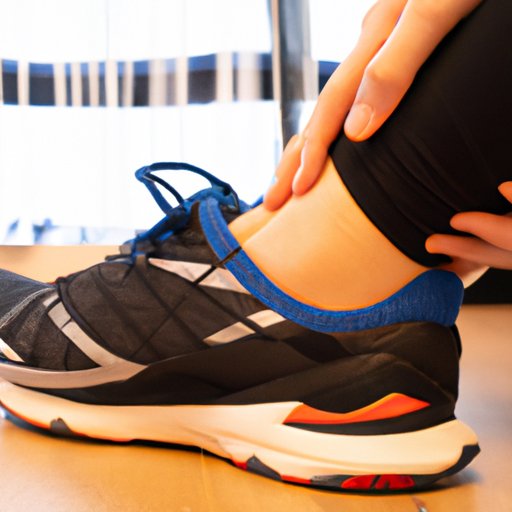
I. Introduction
If you’re a runner or athlete, chances are you’ve experienced the dreaded shin splints at some point or another. Shin splints, also known as medial tibial stress syndrome, are a common overuse injury characterized by pain along the shin bone (tibia). This nagging injury can disrupt your training routine and overall fitness goals if left untreated. In this article, we’ll explore several tips and tricks to help prevent shin splints, so you can stay active and injury-free.
II. The Importance of Stretching Exercises
One of the most effective ways to prevent shin splints is through regular stretching exercises. Dynamic stretching can help prepare your muscles and joints for activity, while static stretching post-workout can promote flexibility and reduce muscle soreness.
Some effective stretches for preventing shin splints include:
– Calf stretch: Stand facing a wall with one foot in front of the other. Lean against the wall with your front knee bent and your back leg straight, feeling a stretch in your calf muscle. Hold for 30 seconds, then switch sides.
– Achilles stretch: Stand on the edge of a step with your heels hanging off the edge. Slowly lower your heels, feeling a stretch in your Achilles tendon. Hold for 30 seconds.
– Ankle inversion and eversion: Sit with your legs outstretched in front of you, and rotate your feet inward (inversion) and outward (eversion) for 30 seconds each. Repeat on the other side.
It’s recommended to perform these stretches before and after exercise, and to hold each stretch for at least 30 seconds for maximum benefit.
III. Proper Footwear
Another key factor in preventing shin splints is proper footwear. Wearing shoes that are too worn or lack the necessary support can increase your risk of shin splints and other lower leg injuries.
When selecting shoes, look for characteristics such as:
– Support: Shoes should provide ample arch and heel support.
– Cushioning: A well-cushioned sole can reduce impact forces on your feet and legs.
– Stability: Good shoes should have a firm, non-slip sole to prevent excessive foot motion.
Additionally, different activities may require different types of shoes. For example, running shoes typically have a thicker sole and more support than cross-training shoes. Be sure to choose shoes that are appropriate for your specific activity.
IV. Gradual Increase in Intensity
One common cause of shin splints is a sudden or intense increase in activity level. To prevent this, it’s important to gradually increase your intensity and duration over time. For example, if you’re a new runner, start with shorter, slower runs and gradually increase your distance and speed over several weeks. This gives your muscles and joints time to adapt and become accustomed to the demands of your activity.
Remember to listen to your body and adjust your intensity as needed. If you experience pain or discomfort, take a break and back off your intensity for a few days or until symptoms subside.
V. Cross-Training
Participating in a variety of activities can help alleviate strain on your muscles and joints and prevent overuse injuries like shin splints. Cross-training allows you to work different muscles and engage in lower-impact activities to give your legs a break. Some effective cross-training activities for runners include:
– Cycling
– Swimming
– Yoga or Pilates
Incorporating cross-training into your routine can be as easy as swapping out a few scheduled runs each week for a low-impact activity, like cycling or yoga. The variety can also keep your workouts interesting and challenging.
VI. Rest and Recovery
Finally, adequate rest and recovery practices are crucial for preventing shin splints. Overtraining and failing to give your body time to rest and recover can lead to fatigue, injury, and burnout. Be sure to:
– Take breaks from high-impact exercises like running
– Ice shins after workouts to reduce inflammation and soreness
– Get enough sleep to allow your body time to heal and recover
Additionally, be aware of the signs and symptoms of shin splints and seek medical attention if pain or discomfort persists despite preventative measures.
VII. Conclusion
To prevent shin splints, it’s important to take a multi-faceted approach that includes stretching exercises, proper footwear, gradual intensity increases, cross-training, and rest and recovery practices. By incorporating these tips and tricks into your routine, you can reduce your risk of injury and enjoy a healthy, active lifestyle. Remember to always listen to your body and seek medical attention if pain or discomfort persists.




